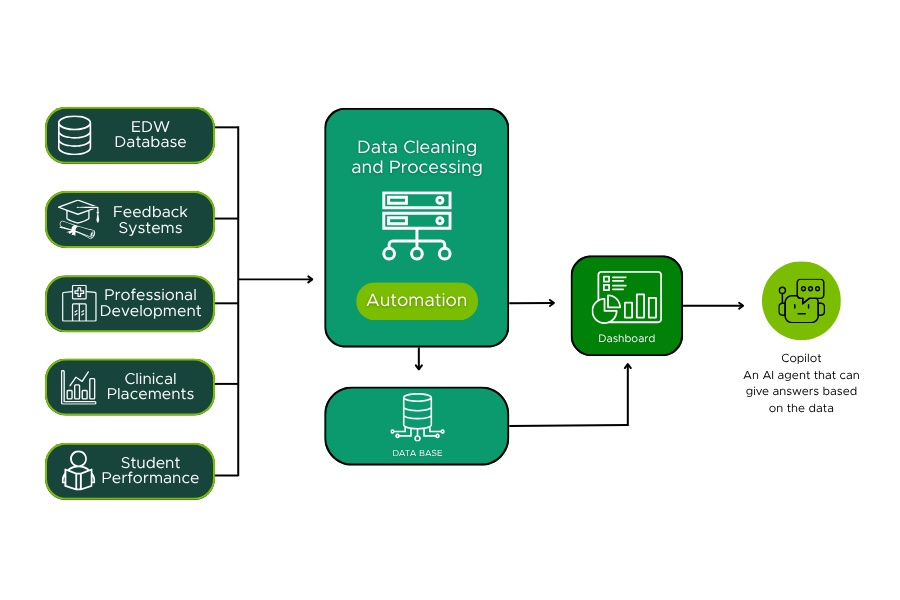News
Laying the groundwork for AI-powered decision intelligence in nursing education

Imagine being able to identify the exact moment in a nursing program when students are likeliest to experience a setback — or having the ability to more efficiently aggregate data for reaccreditation.
These are common issues in higher education that are compounded by a reliance on small teams working in numerous silos, trying to work with data across multiple systems, which frequently do not talk together. But the Business Solutions team at the Michigan State University College of Nursing is addressing these challenges by building the foundation for artificial intelligence (AI)-powered decisions.
The AI architecture is being led by Andy Greger, director of technology and digital innovation, and data architect Smrithi Ajit, who co-leads the design and coordination of the college’s data and automation systems. Together, they’ve structured a sequence for processing data using the programming language Python and automated shell scripts. That data is then integrated into cloud-native dashboards using Microsoft Power BI and Tableau.
“This enables teams across the college to access a single, structured source of truth tailored to their roles, reducing redundant effort and increasing confidence in the numbers,” said Ajit. “Even though the project is still in development, it has already improved efficiency in enrollment tracking, workload planning, and accreditation preparation.”
These dashboards help enable faster, more informed decisions using data that is accurate, up-to-date, and adaptable. For example, if faculty notice an uptick in the time students take to graduate, the dashboard can identify where setbacks occur allowing instructors to intervene early.
“The idea originated from envisioning what could be possible if all of our data sources seamlessly communicated,” Greger said. “That vision evolved into a framework where thoughtfully applied AI and automation can generate faster insights and enable real-time adjustments that enhance student outcomes.”
Crucially, this work lays the groundwork for responsible AI integration. Clean, well-structured data is essential for machine learning models, natural language agents, and other tools to function effectively. Once in place, the system can generate predictive insights, automated alerts, and interactive query responses, turning data from a reporting burden into a strategic asset.

“AI doesn’t replace our judgment, Ajit said. “It enhances our ability to analyze program data more comprehensively and act in time.” Looking ahead, the college plans to leverage cloud-native platforms like Microsoft Fabric — which combines data tools into one system — to improve scalability and eliminate downtime. This will move the college from reactive reporting to real-time decision support.
“The framework is highly adaptable,” Greger noted. “Because it’s built on open technologies and enterprise tools, other academic units can replicate it to reduce reporting burdens, improve governance, and prepare for AI-enhanced decision-making.”
By combining automation, clear logic, and role-specific dashboards, the College of Nursing is building a future-proof model that transforms data chaos into AI-ready intelligence — not just for one program, but potentially across the institution.
Chief Administrative Officer Lou Candiotti said, “The college has gone from unmatched numbers to one master data source. Reports that once took days now run in minutes. It has helped us align college enrollment with University-level budgeting and informatics. Ultimately, it has enabled us to make stronger strategic decisions and position the College of Nursing as a leader within Michigan State University.”
Published Aug. 6, 2025.
